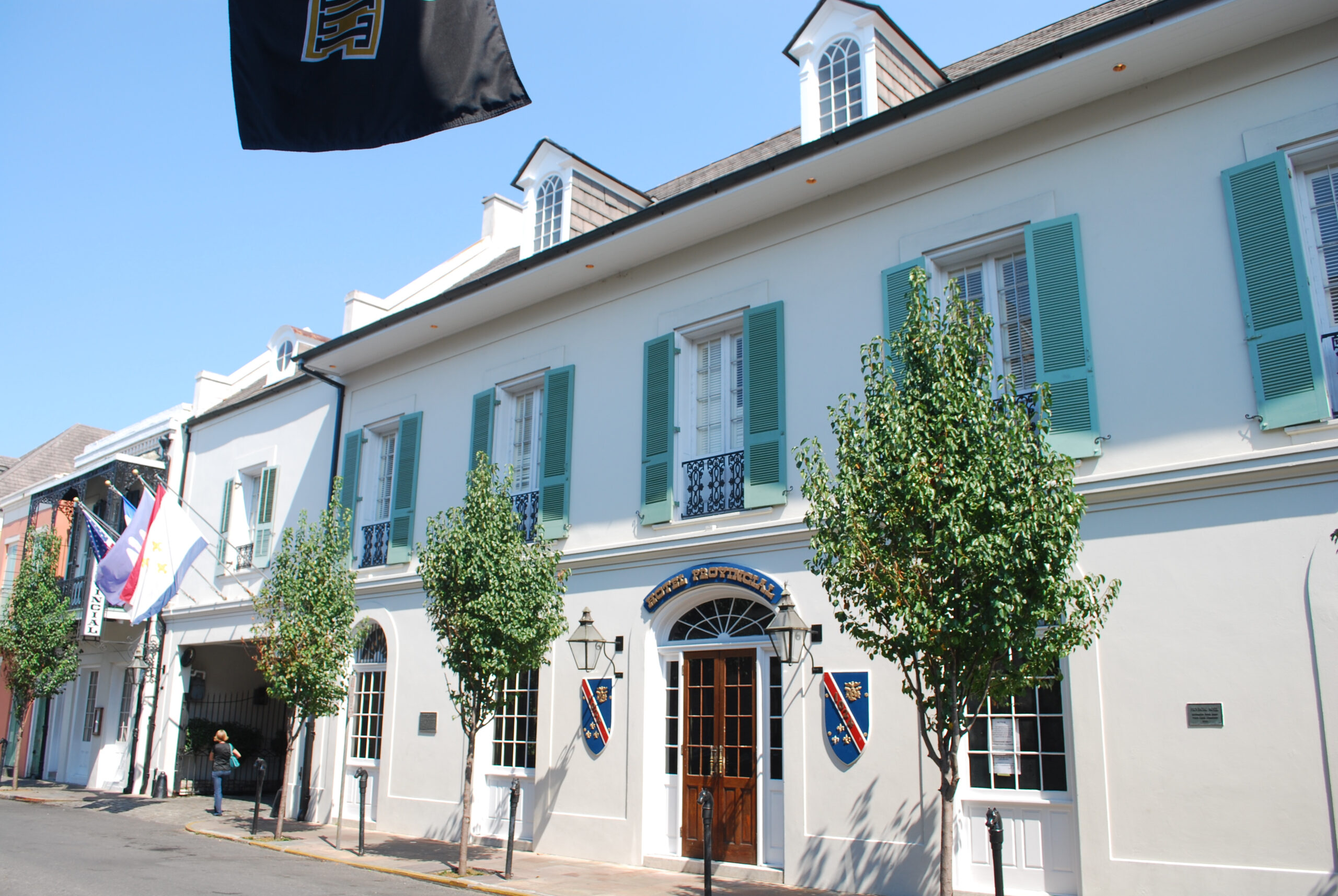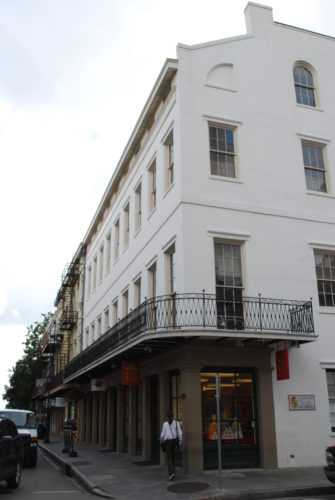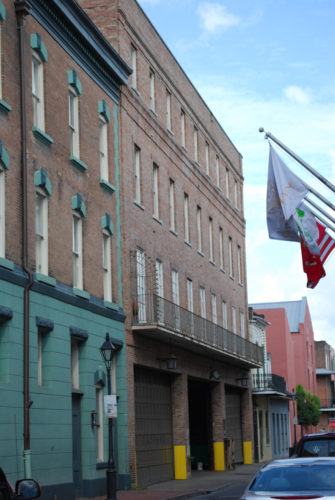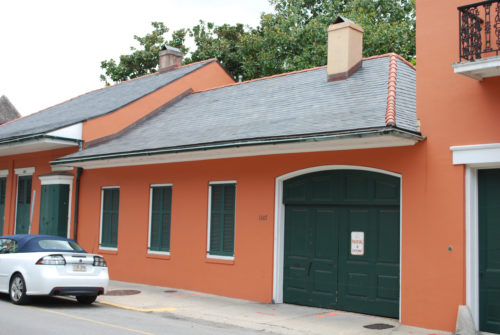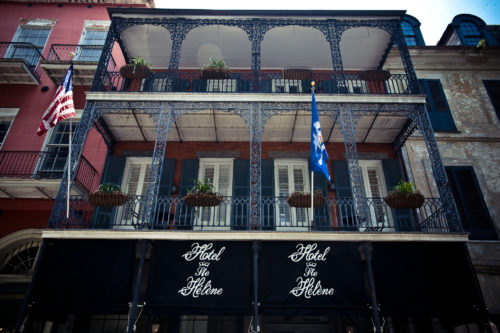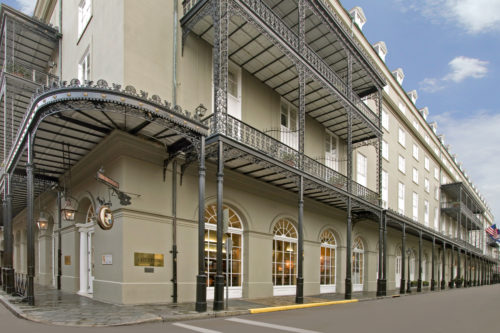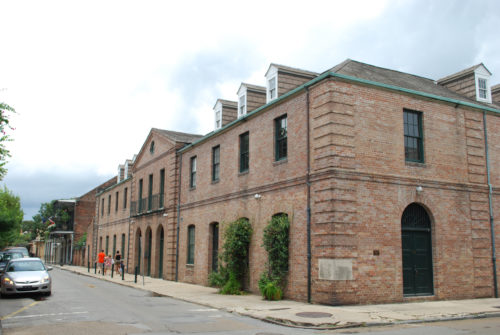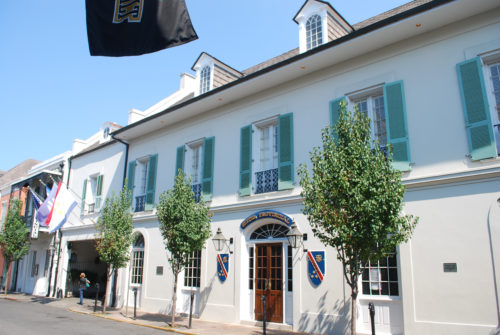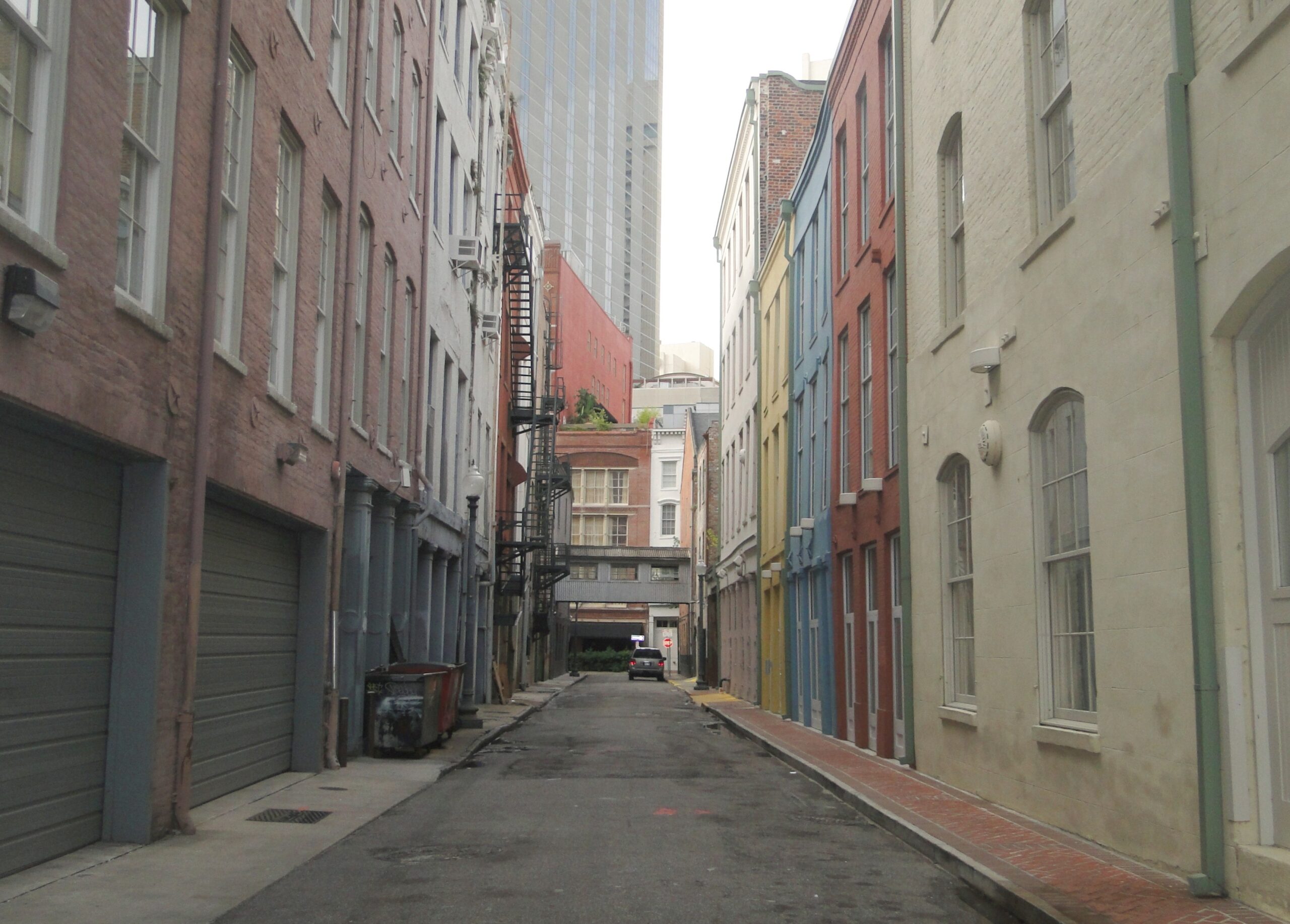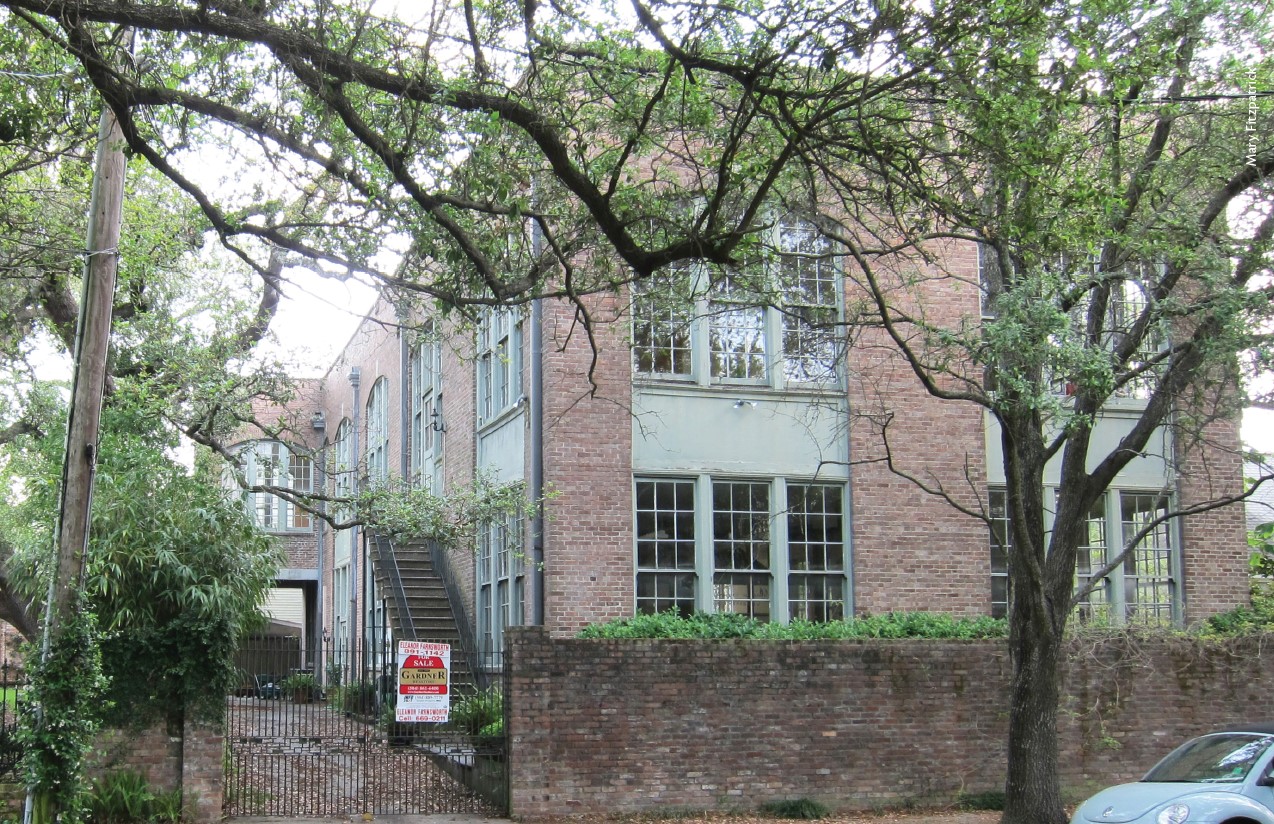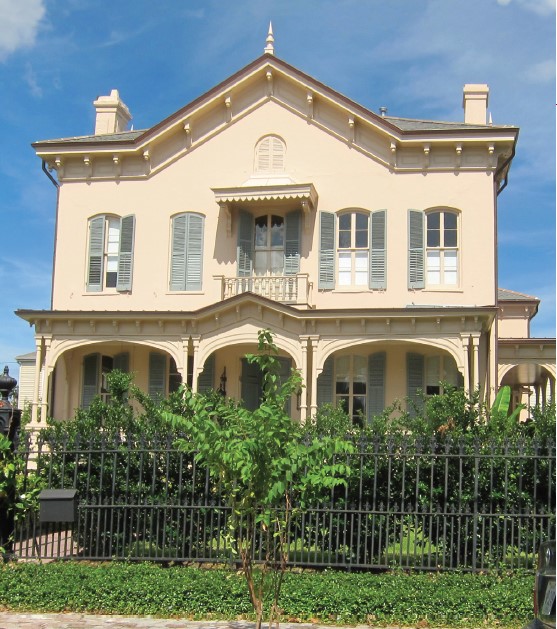This story is from the archives of PRC’s Preservation in Print magazine. Interested in getting more preservation stories like this delivered to your door monthly? Become a member of the PRC for a subscription!
By Donna and Jonathan Fricker
Fricker Historic Preservation Services, LLC
“The heart of the old French Quarter has stopped beating.” So bemoaned noted Louisiana author Lyle Saxon after a fire destroyed the old French Opera House in 1919. This was just the latest in a long series of losses and indignities to befall the venerable old Quarter. In better times, it had been the heart — the very focus and center of New Orleans’ vibrant social and commercial life. But as more and more Americans poured into the city and developed areas farther up the Mississippi River, the old Quarter’s preeminence began to wane. By the late 19th century, power shifted markedly to the American sector. Meanwhile, the old Quarter languished into something less than genteel poverty.
It was no longer desirable real estate, to put it mildly. Leading businessman William Schultz said, “In its present condition the Vieux Carré renders valueless a big slice of our commercial section…It is quite certain that a general demolition of the tumbledown shacks…will be necessary for the expansion of the city.” Indeed, even as early as 1895, officials made plans to demolish the Cabildo and the Presbytere. Though they never followed through with these demolitions, the city did move to purchase an entire city block nearby, demolishing the buildings and clearing out the debris. There, beginning in 1903, a new Civil Courts Building was built. This grand Beaux Arts pile, out of scale with the neighborhood, is still the great edifice some French Quarter antiquarians love to hate.
Beginning in the 1920s, a local preservation movement was starting to stir. Some see the loss of the French Opera House as the final turning point. It was during the ballyhoo years of the 1920s that the old Quarter began to be seen as something romantic and exotic. It became a comfortable haven for artists and writers, including notables Sherwood Anderson and William Faulkner.
1: 300-304 Royal. 1957, Bernard and Bernard, architects. The Vieux Carre Survey identifies this handsome early nineteenth century looking building as “a 1950s reconstruction of three demolished three-and-one-half story townhouses.” Recipient, along with adjacent Monteleone Hotel parking garage, of Vieux Carre Commission award in 1958.
2: 630 Royal, M.S. Rau’s Antiques, 1948.
Wealthy and prominent philanthropist William Ratcliffe Irby restored his own home in the Quarter and donated the Lower Pontalba to the Louisiana State Museum, complete with an endowment to secure its long-term preservation. Various local groups were founded in the Quarter that would play a key role in bringing the neighborhood back, including Le Petit Theatre du Vieux Carré (1919), the Arts and Crafts Club (1922) and the Petit Salon (1924).
The culmination of all these efforts was the creation of the Vieux Carré Commission in 1937. The VCC was made possible by a constitutional amendment passed in late 1936. The legislation stated that the commission was established, “in order that the quaint and distinctive character of the Vieux Carré section of the City of New Orleans may not be injuriously affected.” A critical event was the founding in June 1938 of the Vieux Carré Property Owners Association, which served as a tenacious watchdog for French Quarter preservation.
As with many early preservation success stories, it was a woman who took the helm in the Vieux Carré. In this case it was grand dame and Vieux Carré Property Owners Association leader Elizebeth Werlein. Derided by the business community as “a nice girl, who didn’t know that progress meant destruction of old buildings,” Werlein had the social clout, not to mention the spunk, to make things happen. Her efforts bore considerable fruit, so much so that Mayor Robert Maestri dubbed her “mayor of the French Quarter.”
The Vieux Carré Commission, created by the nation’s second oldest historic district ordinance, faced a considerable challenge. How does one preserve the general feel of a neighborhood? What is to be done about new buildings going into the district? The latter has been a topic of hot debate, both in academic lecture halls and in established historic district commissions.
The very notion of a historic district, as opposed to an individual landmark, is something comparatively new. It originated in 1913, when the French Commission des Monuments Historiques took the unprecedented step of designating the neighborhood around the Cathedral of Rouen as an area worthy of preservation and protection. What was new was not just designating the cathedral, but the area around it as well. It was a medieval historic district.
World War II raised the question of new construction in historic areas in a very big way, as the German Air Force created countless opportunities for new infill construction in cities all across Europe. In some cases old town centers were carefully reconstructed using old plans, drawings, and even surviving 1930s images from the new medium of color photography. But for other towns and cities, it was just the opposite.
Buoyed by the strictures of Modernism, various European architects, planners, and by extension, their political masters, decided that new buildings in a historic district should freely and frankly express their modernity. It was considered intellectually honest. But the practical result could be discordant. There could be an uncomfortableness in the assemblage of buildings, old and new — rather like trying very hard to associate with people you don’t actually like (to paraphrase Abby Aldrich Rockefeller). It would not be that way in the French Quarter.
Perhaps it was old-fashion Southern courtesy — not wishing to stand out and be showy at the expense of others. Perhaps it was a strong sense of history. Perhaps it was conservative taste. But more by custom than law, architects, developers and Vieux Carré Commission members reached a strong consensus that new buildings in the Quarter had to “blend in.” What developed came to be known as the “French Quarter Style” or the “Vieux Carré Revival Style.”
1:912-920 Bienville, 1957, Goldstein, Parham and Labouisse, architects. Even warehouses received the French Quarter Style treatment. Note domestic-looking windows and second floor cantilever wrought iron-looking decorative balcony. Not needed from a functional standpoint, the balcony clearly was an attempt to blend into the existing French Quarter building stock.
2: 1307-09 Royal, 1960, Freret & Wolfe.
3: 508-510 Chartres. When renovated for hotel use in 1954, the rather chaste façade of this 1842 building received a three-story, lacey cast-iron gallery under its own roof. The second and third story façade windows were replaced by French doors to access the gallery.
There were many evocative images of the old Quarter that had become famous and shaped most people’s romantic perception of the district. The French Quarter evoked images of lacey cast iron balconies and galleries, copious French doors, neat little Creole cottages, rich and thick mottled plaster walls, crisp cantilevered balconies with decorative wrought iron balustrades, Greek Revival cornices and columnar shop fronts and quiet classical buildings, with little in detailing, that seemed at peace with their surroundings. This became the look that was sought.
The French Quarter Style at its most basic meant grafting a few signature features onto a traditional building shape. In a few notable instances, buildings were touted as “reconstructions” of demolished historic buildings, sometimes using salvaged parts. The building constructed for Le Petit Theatre in 1922 is considered to be the “birth” of the Vieux Carré Style. The design, by Armstrong and Koch, notes the VCC, “marked the first attempt to fashion a new building to blend with the quarter’s old structures.”
The grandest and probably most controversial French Quarter Style building is the Royal Orleans Hotel (1960), whose form and appearance was rooted deeply in the long-gone St. Louis Hotel, which previously occupied the site. The Royal Orleans was the first hotel built in the Quarter in 50 years. The designing architects, modernists Curtis and Davis, had proposed a new twist on the Quarter. But the Vieux Carré Commission considered their plans to be out of character with the district. It was then that Sam Wilson was brought in to redesign the exterior. The result is generally regarded as a well-done example of the French Quarter Revival genre. Despite its considerable height and width, the design scales itself well to the surrounding area.
1: Royal Orleans Hotel (now Omni Royal Orleans), 621 St. Louis St., 1960, Koch and Wilson, Architects; Curtis and Davis, Associate Architects.
2: 1201-1209 Chartres, Stella Maris Maritime Center, 1948, Herbert Benson & George Riehl, architects. The design inspiration for this institutional building was clearly the nearby Ursulines Convent (1745).
3: 1024 Chartres. Provincial Motor Hotel, 1961. Recipient of 1961 Vieux Carré Commission Honor Award.
And scale is one of the keys to successful historic infill construction. Virtually all of the district’s French Quarter Style buildings maintain the height and rhythm of the old streetscape. To heighten one’s appreciation of this simple fact, one need only consider the historic churches of old New York City. Once, their spires towered above the surrounding buildings. Now, surrounded by modern skyscrapers, they seem relegated to the bottom of a very deep shaft.
The French Quarter Style flourished during the middle decades of the 20th century at a time when modernism was supreme. It was a local trend that would have been spat upon by serious modernists of the day. Yet, at the most basic level, the French Quarter Revival Style achieved its purpose.
These newer buildings really do blend in, sometimes quite handsomely. And they are, in no small measure, responsible for the way the district holds together so well. They contribute to the district’s omnipresent “old world” feel, much prized by tourists and residents alike. As Malcolm Heard wrote in his 1997 French Quarter Manual, “The best of this work deserves respect for its inventiveness and skill and for the genuine desire for contextual harmony it represents.”
And while “fake” historic buildings are not recommended by today’s historic preservation commissions, the Vieux Carré Revival Style is nonetheless part of the history of preservation in the city. In late 2011, the National Park Service accepted an update to the Vieux Carré National Register of Historic Places nomination that recognized 50-plus year old Vieux Carré Revival Style buildings as historic components of the district, opening eligibility for certain tax incentives for newer French Quarter properties.
The above described Vieux Carré Historic District National Register update was prepared at the request of the Preservation Resource Center of New Orleans by board member Donna Fricker and her husband Jonathan. The full text is available here.




